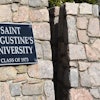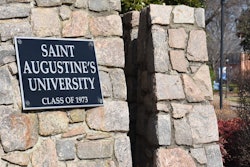Hampton University to Lead $101 Million NASA Project
HAMPTON, Va.
The National Aeronautics and Space Administration will give Hampton University $101 million to build a satellite to study how clouds form at the edge of space.
After two years of proposals and interviews, Hampton University beat out more than 40 schools to lead the project.
“This is the largest deal for us ever,” Hampton University Professor Dr. James M. Russell III told the Virginian-Pilot of Norfolk. He worked at NASA for 30 years before moving to Hampton University in 1996 and will be the project’s principal investigator.
The Aeronomy of Ice in the Mesosphere, or AIM, experiment will determine whether clouds forming in the uppermost atmosphere are a sign the global climate is changing. They are becoming brighter and more numerous and are coming closer to Earth, Russell said, which suggests carbon dioxide is building up and cooling the atmosphere.
Carbon dioxide is considered a key ingredient in theories of global warming. But if the clouds grow large enough, they could help slow global warming by reducing the amount of sun reaching the Earth’s surface.
Hampton University will act as the prime contractor, managing the development of the satellite and its instruments. It will subcontract work to companies and other universities.
The 3-foot-by-3-foot satellite weighs about 430 pounds and has a 6-foot solar-panel wingspan. It will be shipped to Vandenberg Air Force Base in California for the launch, which is scheduled for Sept. 29, 2006. The satellite will orbit for at least two years.
Hampton University students will work on the project, making it a good recruiting tool for at least the next four years, Russell said. Two graduate students and six undergraduates will be analyzing the data and contributing to scientific papers.
Two years ago, the school’s Center for Atmospheric Sciences won a $97 million contract to launch SAGE III, a satellite instrument that studies the chemical changes in the atmosphere that deplete the ozone layer. Next year, the school and its partners will launch CALIPSO, or Cloud Aerosol Lidar and Infrared Pathfinder Satellite. It will photograph Earth’s atmosphere. AIM’s next milestone will be in October, when Russell’s team meets with NASA for a design review.
— Associated Press
© Copyright 2005 by DiverseEducation.com















